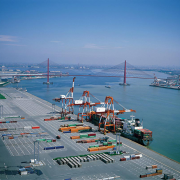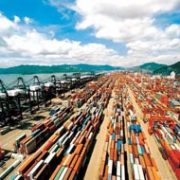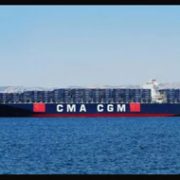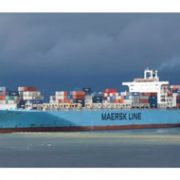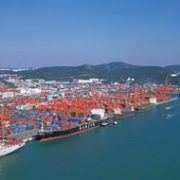Navios takes delivery of the first of 4 box ships on charters
IN line with China’s Emission Control Area (ECA) regulations, all ships calling at selected ports are required to switch to low-sulphur fuel with a sulphur content equivalent to 0.5 per cent m/m for one hour after berthing to one hour before unberthing.
This rule applies to the ports of: Shanghai, Ningbo, Zhoushan, Tianjin, Qinhuangdao, Tangshan-Caofeidian, Jingtang, Huanghua, Qinghuangdao, Jiaxing, as well as ports in Taizhou-Zhejiang province, reports GAC Hot Port News.
Within the Yangtze River delta the ports that must follow this rule are: Taicang, Changshu, Zhangjiagang, Nantong, Jiangyin, Jingjiang, Changzhou, Yangzhou, Taizhou, Zhenjiang and Nanjing.
In Guangzhou, the affected ports are Xinsha, Huangpu and Nansha.
In addition the ports of Hong Kong, Shenzhen, Dongguan and Zhuhai must also comply with the new regulation.
Effective from January 1, 2018, the ECA regulation will also be implemented at Dalian, Panjin, Jinzhou, Bayuquan and Huludao.
From the same date, ECA regulations will be implemented at Tianjin, Qinhuangdao, Huanghua, Caofeidian and Jingtang. At these ports ships must use the low sulphur fuel while berthing.
CHINA State Shipbuilding Corporation (CSSC) shipyards Jiangnan Changxing Shipbuilding (Hudong Zhonghua) and Shanghai Jiangnan Changxing Heavy Industry (SWS) has signed a contract with Paris-based Bureau Veritas (BV) for the classification of nine CMA CGM 22,000-TEU ships.
Under the deal, all nine gas-fuelled ultra-large box ships will be built to BV class rules and under BV newbuilding supervision, reports Rotterdam’s World Maritime News.
“Bureau Veritas is delighted and honoured to be classing these ships,” said BV vice president Claude Maillot.
The classification contract for the world’s largest LNG fuelled containerships was held at Marintec 2017 in Shanghai.
The new ships will have a bunker capacity close to 18,000 cubic metres (cbm). The first ships from the order are scheduled to come into service from the end of 2019.
CMA CGM will become the first shipping company in the world to equip giant containerships with such engines, under a contract estimated to be worth US$1.2 billion.
NAVIOS Maritime Containers, a growth vehicle in the container sector based in the Marshall Islands, has announced that it has taken delivery of 3,270-TEU APL Denver, the first of four 2008-built panamax with period charters.
Following this acquisition, Navios will control 20 vessels of 84,520 TEU and an average age of 9.8 years, reported the American Journal of Transportation.
The remaining three vessels are expected to be delivered by mid-December. Navios Containers agreed to acquire the four 2008 built 4,730-TEU unit for US$96.8 million.
They are all employed on charters with a net daily charter rate of $27,156. The charters expire in 2020 and are expected to generate $70 million in operating profit.
Prev article:

